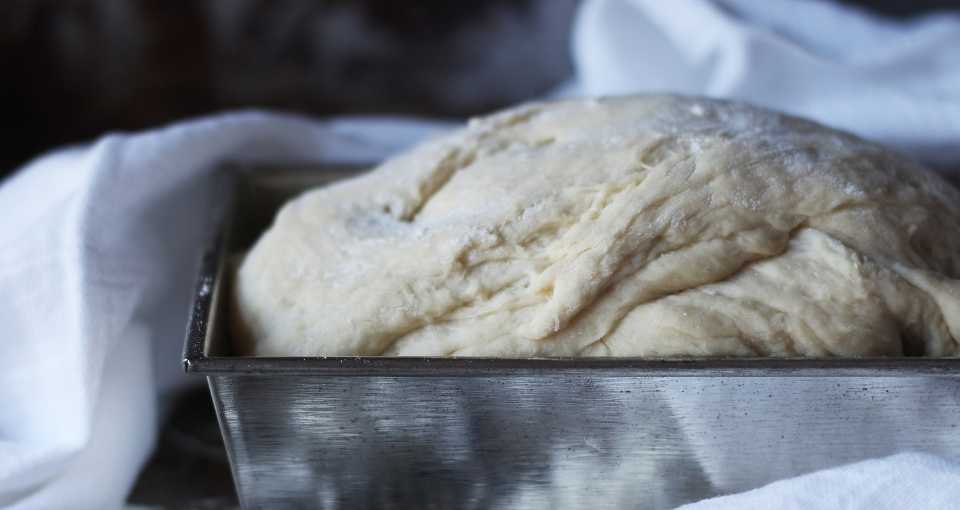Many times people will want to make their bread dough ahead of time. So on a already busy day, all that’s left is to simply bake the dough and serve fresh as possible.
The idea is not a bad one as it saves you from having to do the mixing, proofing and baking all in the same day.
Letting Dough Rise In Fridge To Bake The Next Day
One main problem with this method is that it can be tricky to get your bread dough in shape and let it sit overnight without running the risk it collapses or rises too much.
If your plan is to simply avoid having to reshape the dough the following day and simply toss the dough in the oven. Then I have the best method for doing that as well.
Otherwise letting dough rise in the fridge is a great way to enhance the flavor (by slow proofing) and allows you to begin early in the morning with fresh baking dough.
This guide will tell you exactly what you need to know and how to avoid the stated problem.
Can You Put Dough In Fridge After It Rises?
So in case you aren’t ready to immediately bake a dough you made from scratch. Even after giving it a chance to rise, then you have a couple options to help ensure the dough will stay as fresh as possible.
Yes you can store dough in a refrigerator for up to 3 days. The dough will continue to rise but much slower at cooler temperatures. Place dough in a sealed bag or in a covered bowl before storing.
Luckily this will not have any negative effect on the dough, but there are some good tips to follow first before doing this.

How To Store Bread Dough Overnight In A Fridge
Since you want to save baking for a later time, maybe the following day or two. The best method is to simply store your dough overnight in the refrigerator.
Here are the following tips and things to look out for when storing bread in a refrigerator overnight.
Store Dough In A Loaf Pan
Do this as opposed to simply laying the dough out or in a bowl. The pan will not only keep the bread in shape (which means you don’t have to shape the dough just pop it in the oven).
But you won’t get a skin around the whole dough. A skin is where oxygen begins to dry out the dough forming a skin or unwanted crust. This skin isn’t always a bad thing but can be hard to remove after its formed.
You May Need To Punch The Dough
Because refrigerating the dough will not completely stop the yeast activity. The dough will continue to rise relatively fast until it has completely cooled down.
At one point during the first couple of hours you may need to punch the dough. Punching the dough means to simply press down the rising dough in order to stop it from over expanding.
Don’t Let The Dough Dry Out In The Fridge
It is also important to consider that the dough can dry out in the refrigerator. The outer parts of the dough that dry will form a skin, preventing further rising during baking.
No matter if the dough has already been risen or not. You should seal the dough or cover the container it is in. If the bread is in a pan already then you can place the whole thing in a plastic bag.
Place In Refrigerator Sooner Than Later
Depending on if you are doing a first rise out the fridge or inside. If you are going to rise (proof) the dough before refrigeration. Then make sure to not proof it for too long. Since the refrigerator will not immediately stop the rising.
As the temperatures cool down the yeast will slow and so will the rising. This may take 5 – 10 minutes in the fridge. Depending on the size of the dough and how cold the temperature is.
So its best to get the dough in the fridge when it is close to reaching the rise completion. The easiest method to tell is that the dough has nearly doubled in size. This will prevent it the dough from getting over or under proofed.
Under-proofed would be that it hasn’t risen enough before baking. Over-proofing is that it has had too much time to rise.
First Rise In Refrigerator Is Better.
Instead of letting the bread rise at warm temperatures first. It can be better to cold-proof the bread. Either way the slower the rise, the more complex the flavors of the bread become.
Read more: Pizza Dough Rise Times: 1 to 72 Hours (What Works Best)
How Long Can You Keep Bread Dough In The Fridge?
Keeping dough in a refrigerator is a great way to store it overnight. But what if you want to keep the dough for longer?
The longest you should keep dough in the fridge is 48 hours. You can go for an extra 24 hours or up to three days but the risk of the dough drying out becomes too great to go any longer.
This all of course rides on minor details, such as what temperature is your refrigerator? How long did you let the dough rise and ferment beforehand?
Again remember its always best to refrigerate the dough as soon as possible. Waiting too long and the dough will not last as long in the fridge.

Can You Bake Dough Straight Out Of The Fridge?
If you have dough in the fridge and a preheated oven. Then is there any reason not pop the dough in the oven right away?
Taking your dough out the fridge and placing it directly in the oven will work just as fine as bringing it up to room temperature. This method is actually better because you don’t run the risk of having the dough over-ferment.
One thing to consider is the bake time is going to be slightly longer using refrigerated dough. Since the dough will simply take more time to heat up when its been chilled.
Although depending on how big the dough is this difference can be trivial. So I wouldn’t worry about adjusting the baking time very much if at all.
When it comes to pizza dough this is so much a issue. Unless you plan to pre-bake the dough before adding any toppings. Still by the time you roll the dough out it will have warmed up enough.
Never mind topping a pizza after which you rolled out. There is less a chance the dough will remain chilled by then. So I wouldn’t worry about pizza dough as much.
How To Save Time and Work Making Bread
Making bread can be a great skill to learn The ingredients are very simple and the process is relatively easy. Still there is a learning curve to making a really good dough.
For example What kind of yeast of to use? How much water to add etc.
To make things much easier, consider investing in a bread maker. Bread machines do the rising and baking together, allowing you to set a time for it to be ready.
Check out the best bread machines on Amazon here.
So you can still make dough in advanced and then have it ready just in time to bake. It takes a lot of the guess work out and even makes clean up much easier.

